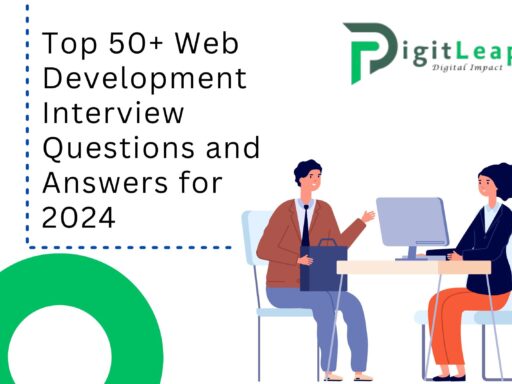In the competitive field of digital marketing, SEO expertise is highly sought after. To help you ace your next SEO interview, we’ve compiled a list of 65 essential questions and expert answers. This comprehensive guide will prepare you to tackle a variety of SEO topics and demonstrate your proficiency in the field.
1. What is SEO and Why is it Important?
Answer: SEO, or Search Engine Optimization, is the practice of enhancing a website to achieve higher rankings in search engine results pages (SERPs). This is crucial because higher visibility leads to increased organic traffic, which can significantly impact business success.
2. What are the Main Types of SEO?
Answer: The three main types of SEO are On-Page SEO, Off-Page SEO, and Technical SEO. On-Page SEO focuses on optimizing individual web pages, Off-Page SEO involves improving site authority through backlinks and social signals, and Technical SEO deals with the website’s backend structure.
3. How Does SEO Work?
Answer: SEO works by optimizing various elements of a website to align with search engine algorithms. This includes keyword optimization, improving site speed, ensuring mobile-friendliness, and acquiring high-quality backlinks.
4. What is Keyword Research and Why is it Important?
Answer: Keyword research involves identifying the terms and phrases that users are searching for related to your business. It’s crucial because it informs your content strategy and helps target the right audience.
5. What is the Difference Between Organic and Paid Search?
Answer: Organic search results are achieved through SEO efforts and appear naturally based on relevance and authority. Paid search results are achieved through paid advertising, such as Google Ads, and are displayed as sponsored listings.
6. Explain the Role of Meta Tags in SEO
Answer: Meta tags provide information about a webpage to search engines. Important meta tags include the title tag, which is crucial for ranking, and the meta description, which can influence click-through rates.
7. What is a Backlink and Why is it Important?
Answer: A backlink is a link from one website to another. Backlinks are important because they signal to search engines that your site is trustworthy and authoritative, which can improve your site’s ranking.
8. How Do You Conduct a Competitor Analysis?
Answer: Competitor analysis involves identifying your competitors and evaluating their SEO strategies. This includes analyzing their keywords, backlink profiles, content, and overall performance to uncover opportunities and threats.
9. What is On-Page SEO?
Answer: On-Page SEO refers to optimizing individual web pages to rank higher and attract more relevant traffic. This includes optimizing content, headings, meta tags, images, and internal links.
10. What is Off-Page SEO?
Answer: Off-Page SEO involves activities done outside of your website to improve its authority and ranking. This includes building backlinks, social media marketing, and influencer outreach.
11. Explain Technical SEO
Answer: Technical SEO focuses on the backend aspects of a website that affect its visibility and usability. Key areas include site speed, mobile-friendliness, indexing, crawlability, and website architecture.
12. What is a Sitemap and Why is it Important?
Answer: A sitemap is a file that lists all the pages on a website. It helps search engines crawl and index the site more efficiently. XML sitemaps are used for search engines, while HTML sitemaps are for users.
13. What are the Benefits of Local SEO?
Answer: Local SEO helps businesses attract customers in their geographical area by optimizing for local search queries. Benefits include increased visibility in local search results and Google Maps, leading to more foot traffic and local engagement.
14. How Do You Optimize for Mobile Search?
Answer: To optimize for mobile search, ensure your website is responsive, meaning it adjusts to different screen sizes. Also, improve site speed, use large fonts, and ensure easy navigation on mobile devices.
15. What is a 301 Redirect and When Should it be Used?
Answer: A 301 redirect is a permanent redirect from one URL to another. It should be used when moving or deleting pages to ensure that users and search engines are redirected to the new location and to preserve SEO value.
16. What is a 404 Error and How Should You Handle It?
Answer: A 404 error occurs when a page cannot be found. To handle it, you should create a custom 404 page that provides helpful information or redirects users to other parts of your site to maintain user experience.
17. What are SEO Best Practices for Content Creation?
Answer: SEO best practices for content creation include using relevant keywords, creating high-quality and engaging content, optimizing headings and meta descriptions, and incorporating internal and external links.
18. How Do You Measure SEO Success?
Answer: SEO success is measured by tracking metrics such as organic traffic, keyword rankings, bounce rate, and conversion rate. Tools like Google Analytics and Google Search Console can help monitor these metrics.
19. What is the Role of Social Media in SEO?
Answer: Social media can enhance SEO by driving traffic to your site, increasing brand visibility, and generating backlinks through shared content. While social signals are not direct ranking factors, they contribute to overall online presence.
20. What are Structured Data and Schema Markup?
Answer: Structured data and schema markup are codes added to a webpage to help search engines understand the content. They can enhance search results with rich snippets, improving visibility and click-through rates.
21. How Do You Improve Website Load Speed?
Answer: To improve website load speed, optimize images, leverage browser caching, minimize HTTP requests, use a content delivery network (CDN), and enable compression.
22. What is a Canonical Tag and When Should You Use It?
Answer: A canonical tag is an HTML element that specifies the preferred version of a page to avoid duplicate content issues. It should be used when there are multiple versions of a page with similar content.
23. What is the Role of User Experience (UX) in SEO?
Answer: User experience (UX) plays a significant role in SEO by affecting how users interact with your site. A positive UX, including fast load times, intuitive navigation, and engaging content, can reduce bounce rates and improve rankings.
24. How Do You Conduct an SEO Audit?
Answer: An SEO audit involves evaluating various aspects of a website to identify issues and opportunities. This includes analyzing on-page elements, technical SEO, backlinks, and overall site performance.
25. What is the Difference Between Do-Follow and No-Follow Links?
Answer: Do-follow links pass link authority and contribute to SEO rankings, while no-follow links do not pass authority and do not impact rankings directly. No-follow links are often used for sponsored content or user-generated content.
26. What is a Long-Tail Keyword and Why is it Important?
Answer: Long-tail keywords are longer, more specific search phrases. They are important because they often have lower competition and can attract more targeted traffic, leading to higher conversion rates.
27. How Do You Handle Duplicate Content?
Answer: Duplicate content can be managed by using canonical tags, implementing 301 redirects, and creating unique content for each page. It’s essential to avoid duplicate content to prevent SEO penalties.
28. What is a Landing Page and How Should it be Optimized?
Answer: A landing page is a standalone page designed to convert visitors into leads or customers. It should be optimized with clear, compelling content, a strong call-to-action, and minimal distractions.
29. How Do You Optimize a Blog Post for SEO?
Answer: To optimize a blog post, include relevant keywords in the title, headings, and throughout the content. Use engaging meta descriptions, optimize images with alt text, and include internal and external links.
30. What is Link Building and What Strategies Do You Use?
Answer: Link building involves acquiring backlinks to improve a site’s authority and ranking. Strategies include creating high-quality content, guest blogging, reaching out to influencers, and building relationships with other websites.
31. What is Google Analytics and How is it Used in SEO?
Answer: Google Analytics is a web analytics tool that tracks and reports website traffic. It is used in SEO to monitor user behavior, track conversions, analyze traffic sources, and measure the effectiveness of SEO efforts.
32. How Do You Stay Updated with SEO Trends?
Answer: Staying updated with SEO trends involves following industry blogs, attending webinars, participating in SEO forums, and keeping an eye on search engine algorithm updates from sources like Google’s Webmaster Blog.
33. What is a Bounce Rate and How Can You Reduce It?
Answer: Bounce rate is the percentage of visitors who leave a site after viewing only one page. To reduce it, improve page load times, enhance content relevance, and ensure easy navigation.
34. What is the Role of Alt Text in SEO?
Answer: Alt text is used to describe images to search engines and visually impaired users. It helps improve accessibility and provides context for search engines, which can contribute to better rankings in image searches.
35. How Do You Optimize an E-commerce Website?
Answer: To optimize an e-commerce website, focus on product descriptions, use relevant keywords, optimize images, implement structured data, and ensure a smooth checkout process. Improving site speed and mobile-friendliness is also crucial.
36. What is Mobile-First Indexing?
Answer: Mobile-first indexing means that Google primarily uses the mobile version of a website for indexing and ranking. Websites should be optimized for mobile devices to ensure they perform well in search results.
37. How Do You Handle SEO for Multiple Languages or Countries?
Answer: Handling SEO for multiple languages or countries involves using hreflang tags to indicate the language and regional targeting of your pages. Additionally, ensure content is localized and relevant to each target audience.
38. What is a PBN (Private Blog Network) and Why Should You Avoid It?
Answer: A PBN is a network of websites created to build backlinks to manipulate search engine rankings. It’s considered a Black Hat SEO technique and can result in penalties from search engines.
39. What are SEO Tools You Use and Why?
Answer: Common SEO tools include Google Analytics for tracking performance, SEMrush for keyword research and competitor analysis, Ahrefs for backlink analysis, and Moz for on-page SEO and site audits.
40. What is a SERP and How Do You Improve Your Ranking on It?
Answer: SERP stands for Search Engine Results Page. To improve your ranking, optimize your content with relevant keywords, enhance on-page SEO elements, build high-quality backlinks, and ensure a positive user experience.
41. What is the Difference Between SEO and SEM?
Answer: SEO (Search Engine Optimization) focuses on improving organic search rankings, while SEM (Search Engine Marketing) includes both organic SEO and paid advertising strategies, such as Google Ads.
42. What is a Google Algorithm Update and How Do You Prepare for It?
Answer: A Google Algorithm update is a change to Google’s search algorithms that can affect rankings. To prepare, stay informed about updates, adapt SEO strategies as needed, and focus on creating high-quality, relevant content.
43. What is the Role of User Intent in SEO?
Answer: User intent refers to the purpose behind a search query. Understanding user intent helps in creating content that meets the needs of users, which can improve relevance and rankings.
44. How Do You Optimize a Website’s URL Structure?
Answer: Optimize URL structure by making URLs short, descriptive, and keyword-rich. Use hyphens to separate words and avoid using special characters or unnecessary parameters.
45. What is a 302 Redirect and When Should it be Used?
Answer: A 302 redirect is a temporary redirect from one URL to another. It should be used when you need to temporarily redirect traffic while keeping the original URL’s SEO value intact.
46. How Do You Handle Negative SEO?
Answer: Negative SEO involves malicious practices to harm your site’s rankings. To handle it, monitor your backlink profile for spammy links, disavow harmful links, and focus on maintaining high-quality, ethical SEO practices.
47. What is Domain Authority and How is it Calculated?
Answer: Domain Authority (DA) is a metric developed by Moz that predicts a website’s ability to rank on search engines. It is calculated based on various factors, including the number and quality of backlinks, site age, and overall site performance.
48. What is the Role of Internal Linking in SEO?
Answer: Internal linking helps distribute link equity across your site, improves site navigation, and helps search engines understand the relationship between different pages. It can also boost user engagement and reduce bounce rates.
49. What is Content Marketing and How Does it Relate to SEO?
Answer: Content marketing involves creating and distributing valuable content to attract and engage your target audience. It relates to SEO by providing fresh, relevant content that can improve rankings and drive organic traffic.
50. What is a Page Speed Report and How Do You Use It?
Answer: A page speed report provides data on how quickly your website’s pages load. Use it to identify performance issues and implement improvements, such as optimizing images and minimizing code, to enhance user experience and SEO.
51. How Do You Optimize an Image for SEO?
Answer: Optimize images by using descriptive, keyword-rich file names, adding relevant alt text, and compressing images to reduce file size. This helps search engines understand the content and improves page load speed.
52. What is a Google My Business Listing and How Do You Optimize It?
Answer: A Google My Business listing helps businesses appear in local search results and Google Maps. Optimize it by providing accurate business information, adding high-quality images, and encouraging customer reviews.
53. What is a 503 Error and How Should it be Handled?
Answer: A 503 error indicates that a server is temporarily unavailable. To handle it, ensure that the server is back online and use a 503 status code to notify search engines that the site will be available soon, preserving SEO value.
54. What is the Role of Content Freshness in SEO?
Answer: Content freshness refers to regularly updating and adding new content. Search engines prioritize fresh, relevant content, so keeping your content updated can help improve rankings and attract more visitors.
55. How Do You Optimize a Video for SEO?
Answer: Optimize videos by using relevant keywords in the title, description, and tags. Create engaging thumbnails, provide transcripts, and include video schema markup to help search engines understand and rank your content.
56. What is a Local Citation and Why is it Important?
Answer: A local citation is an online mention of your business’s name, address, and phone number (NAP). It’s important for local SEO as it helps validate your business’s existence and improves local search visibility.
57. What is a Negative SEO Attack and How Can You Prevent It?
Answer: A negative SEO attack involves using malicious tactics to harm your site’s rankings, such as building spammy backlinks. Prevent it by monitoring your backlink profile, disavowing harmful links, and focusing on quality SEO practices.
58. What is a Keyword Cannibalization and How Do You Fix It?
Answer: Keyword cannibalization occurs when multiple pages on your site target the same keyword, causing competition and confusion. Fix it by consolidating content, using more specific keywords, and optimizing individual pages for different topics.
59. What is a No-Index Tag and When Should it be Used?
Answer: A no-index tag is an HTML meta tag that instructs search engines not to index a specific page. Use it for pages that you don’t want to appear in search results, such as duplicate content or low-value pages.
60. How Do You Optimize a Website for Voice Search?
Answer: Optimize for voice search by focusing on natural language, long-tail keywords, and question-based queries. Ensure your site is mobile-friendly and provides concise, direct answers to common questions.
61. What is the Difference Between White Hat and Black Hat SEO?
Answer: White Hat SEO involves ethical practices that adhere to search engine guidelines, such as quality content and genuine backlinks. Black Hat SEO uses manipulative tactics that violate guidelines and can lead to penalties.
62. What is Google’s Panda Update and How Did It Affect SEO?
Answer: Google’s Panda update targeted low-quality content and aimed to promote high-quality, relevant content. It affected SEO by penalizing sites with thin, duplicate, or poorly written content.
63. What is Google’s Penguin Update and How Did It Affect SEO?
Answer: Google’s Penguin update focused on penalizing websites with unnatural or spammy backlink profiles. It impacted SEO by devaluing or removing sites that engaged in manipulative link-building practices.
64. What is Google’s Hummingbird Update and How Did It Affect SEO?
Answer: Google’s Hummingbird update improved the search engine’s understanding of context and meaning behind queries. It affected SEO by prioritizing content that is relevant and contextually aligned with user intent.
65. What is the Role of Schema Markup in SEO?
Answer: Schema markup is a type of structured data that helps search engines understand the content of a webpage. It enhances search results with rich snippets, such as ratings or event details, which can improve visibility and click-through rates.






